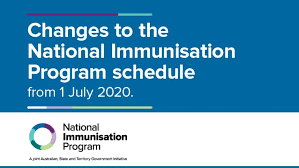
I have recently posted to www.aggravations.org several pieces on the pandemic in Australia – written between 26 August and 2 September but posted all together. (There was a delay as I tried unsuccessfully to get them published elsewhere.) Here’s an overview of the most recent four.
Covid – five things National Cabinet should agree (20 Aug) entreats someone (anyone!) to give the public a detailed schedule of expected receipt by Australia of Pfizer and Moderna over the next 12 months. There may well be uncertainty due to contracts yet to be agreed, negotiations unfinished, quality issues or even suppliers reneging on agreements. But the Federal Government owes it to its public to keep us informed and allow us to share the joy and pain (think ‘accountability’).

Speaking of which, it would be a tragedy if the commitment made to the groups in priority ranking 1a is not completed.
The Commonwealth must take the lead in developing protocols for determining which employees in which sectors will have a mandated requirement for vaccination. Resources need to be made available to community organisations that are helping to ensure that particular groups who are marginalised are getting vaccinated. And, fifth of all, someone (anyone!) needs to provide public data on all aspects of management of the pandemic in Australia. To date it’s been an information-free zone. Think black box.

Vaccinating Australia: insufficient urgency, too much choice? (26 Aug) begins with the assertion that the Gift of vaccination is being Stawelled and although it isn’t a race, Australia is coming last.
No-one seems to have been in a hurry, and those whose turn it is to run are confronted with so many different lanes and handicaps that some of them have been confused. This second article in the group bemoans the lack of urgency and innovation; (the U.K.’s first drive-through vaccinations were given in December 2020). The Federal Government, responsible for aged care, gave the job of vaccination of aged care patients and staff to private enterprises. It allowed a range of other parties to be involved (PHNs, GPs, State and Commonwealth hubs, hospitals) and, confronted with so many options, staff of aged care who were left to their own devices were uncertain and unmotivated. There was no understanding of the importance of individual convenience of accessing a jab.

When things have settled down it will be useful to understand why the covid vaccination campaign doesn’t seem to have benefited from the successful models for life-time (inc. children’s) public health and workplace vaccinations.
The third piece, Vaccine: Let’s not forget the first priorities (1 Sept), focuses in more detail on the failure to get residential aged care patients covered. The unimpressive history of the Government’s ‘national vaccine rollout strategy’, from early January 2021 to (the forthcoming) mandating of vaccination for aged care staff (17 Sept) is briefly rehearsed. (There are two chances that this target will be met – one of which is Buckley’s.)
In the early days the first criterion for setting the priority of a particular group of people was the extent to which they were vulnerable to serious illness and, potentially, to death. No-one objected to this criterion but unfortunately the same people (no-one) bothered to manage the work that needed to follow.

Analysis of what went wrong has to consider the shortage of vaccine supply (obviously), generalised incompetence and lack of urgency, the absence of public information, confusion or overlap between federal and state jurisdictions and, in particular, an ill-disciplined approach to setting priorities for vaccination and acting on them. This last is critical when there is a shortage of supply.

With the Delta variant rampant, vaccination became the key asset in efforts to limit the number of infections, not simply the means of protecting the vulnerable. New criteria for allocation included where a person lives and what contribution they are likely to make to spread of the disease.
The piece ends with consideration of how vaccine supply has to be cross-matched with demand. Such an exercise must be happening behind the scenes, but without it being known to the public (see above!) the Government can maintain its mal-practice of trumpeting success in obtaining extra vaccine supply without emphasis on the fine print ie that the bulk of it doesn’t arrive until month x or next year.
Between you and me, this particular piece was written in the middle of the night after I had bumped in to a television re-broadcast of the day’s Question Time. What upset my sleep were bits of the Prime Minister’s responses in which he claimed that the speed at which vaccinations were by then occurring had made up for the 4-month delay, so much so that the original target would be met by Christmas “or even sooner”. He credited this turnaround to the fact that the government had “been able to bring forward doses” and had “been able to achieve and realise additional supplies”. [It’s clear now that this referred, inter alia, to the swap with Boris.]

In that same Question Time the Prime Minister reported that double-dosed vaccination rates in aged care facilities were “upwards of 80%”. He seemed to regard this as a success, despite the too long history of the issue, and attributed it to the priority given to vaccinations in aged care “which has enabled us to visit all of these facilities to ensure that the double doses are done”. It is not clear what ‘upwards of 80%’ means, or how many of the other 20% have had their first.
The last piece posted in this batch is Vaccination: Accounting for the muddle.
A ledger is needed for Australia’s vaccination program:
‘An account represents a detailed record of changes that have occurred in a particular asset during the accounting period. All these separate accounts are kept in a loose leaf binder, and the entire group of accounts is called a ledger. The ledger is a record which provides all important information.’
The ledger must provide information to the public in an open format and in language people can understand.
Both sides of the ledger must be considered – vaccine supply and demand for vaccine. The Federal Government should inform the public even when things are uncertain and, especially, when plans become unavoidably changed.

The supply side of the ledger is affected by variations in the planned period between a first and second jab. It seems extraordinary that there is no readily available chart showing the best estimates from the research community around the world of the changes in efficacy for the various vaccines consequent upon changes to the time between first and second dose.
The undisciplined approach to priorities for vaccination has extended to a lack of action on them. It’s as if the system’s managers have colluded with public opinion: ‘The highest priorities are still not met – so let’s focus on new ones!’
Instead of a blitz approach to vaccine in aged care facilities, a complicated system developed led by private enterprise entities. Decision makers and commentators were able, in effect, to hide behind the phrase ‘the most vulnerable’. To this vulnerability criterion was added the seriousness of the impact on health and other essential services of sickness and the resulting absence of members of the workforce. This is still important.
With the Delta variant, where a person lives and what contribution they are likely to make to spread of the disease have become as important as the extent to which someone’s health is likely to be severely affected by the condition, should they be infected.
The magnitude of the challenge of allocating scarce vaccine is illustrated by listing those groups who have recently been suggested as being of the highest priority. They include the original highest priorities, hospital staff, Aboriginal and Torres Strait Islander communities, year 12 students, people in selected hot-spots, teachers, inter-State transport workers, children, the 16-39 year olds, childcare and disability support workers, and paramedics.
Unless and until there are ample supplies of vaccine, some extremely difficult decisions will have to be made. If they are not, people will have unrealistic expectations and there is a real risk that they would then be alienated from the program.

Lecturer: Have you done the assignment?
Student: Yes – but I haven’t had time to write the short one.
That’s the most you’ll get from me as an apology!
